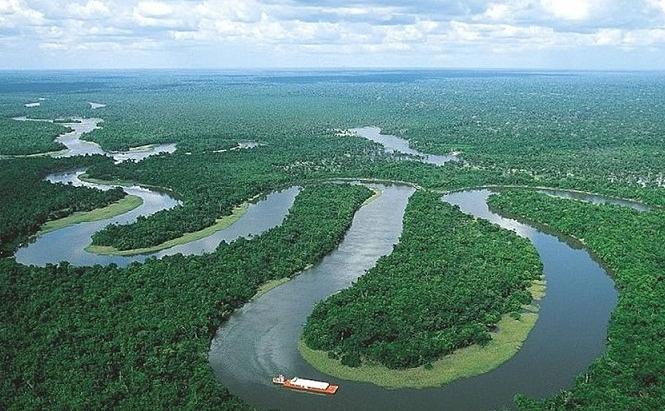Mode means order, control. This term is used to indicate order in many areas of human activity, as well as in the nature around us. One example of this is the river regime. But if in everyday life a person adheres to a certain routine, then in the river regime he often takes an observant position - he notes the fluctuations occurring in the life of the river, and only in some cases can he intervene in the regime of the watercourse in order to change it.
Any object of the world can be described by giving it a characteristic. Including the characteristic is given to surface water bodies - oceans, seas, lakes, rivers, swamps. This characteristic is called hydrological. It necessarily includes the hydrological regime of the river - a set of characteristic features that change the state of the river in time.
The hydrological regime is manifested in diurnal, seasonal, and perennial fluctuations in the water level and water content (together this makes up the water regime), ice phenomena, water temperatures, the amount of suspended matter in the stream, water hydrochemistry, changes in the river bed, flow velocities, waves and other phenomena and processes, occurring continuously in the life of the river. All of the above and other elements of the hydrological regime together determine the regime of the river.
Depending on whether or not there is a hydraulic structure on the river that can influence the hydrological regime, the rivers have a regulated regime or a natural (household) regime. Of all the elements of the river regime, river runoff is of great practical importance. Its value determines the water content of the territory, hydropower territorial reserves, the size of waterways in this territory.
The river regime depends on many factors: climate, terrain, water supply, and others. The main factor is water nutrition. River nutrition is obtained from precipitation during the water cycle in nature. The water supplying the rivers is divided into glacial, snow, rain and underground. The same terms are resorted to, determining the types of river nutrition . In some cases, it is difficult to clearly determine the primacy of any one source of river nutrition (type of river nutrition) and then the term “mixed type of nutrition” is used.
Phases (periods) of the water regime according to characteristic features are divided into floods, low water and floods. High water occurs annually in a certain season of the year, it is marked by a long rise in the level with high marks and the highest water content in comparison with other phases. Low water is also seasonal in nature and is characterized by low level and lowest water content; at this time, the river feeds mainly on groundwater. Floods are characterized by fast and short-term high levels with high water consumption; they occur as a result of rains, snowmelt.

Characteristics of the Nile River: the length of the river with its constituent rivers in the Rukakara-Kager-Nile river system is 6852 km - this is the second longest river of the Earth. The Nile flows from south to north to the Mediterranean Sea. The course of the river is turbulent in the upper and middle parts, in the lower part slowed down; to the mouth of the Nile, it is divided into numerous branches and forms the greatest delta near the Mediterranean Sea. The Nile is the source of life in the desert Sahara. Almost the entire
population of Egypt (97%) settled along its coast. The permanent Nilu watercourse is provided with year-round equatorial rains (the catchment area of the Blue Nile) and rains in the southern regions (the catchment of the White Nile), and rains on the Abyssinian Highlands, washing away loose soil. The river flow carries suspensions, depositing nutrient silt in the delta, in the fields of which the Egyptians harvest up to 3 times a year. To combat floods, in which
the river water level in the region of Cairo increased by 8 m, which threatened the population with disaster, the famous Aswan Dam was built. And now the regime of the Nile River in the lower reaches is regulated. But although the Nile is 3 times longer than the Volga, in its channel it carries a volume of water 2 times less.